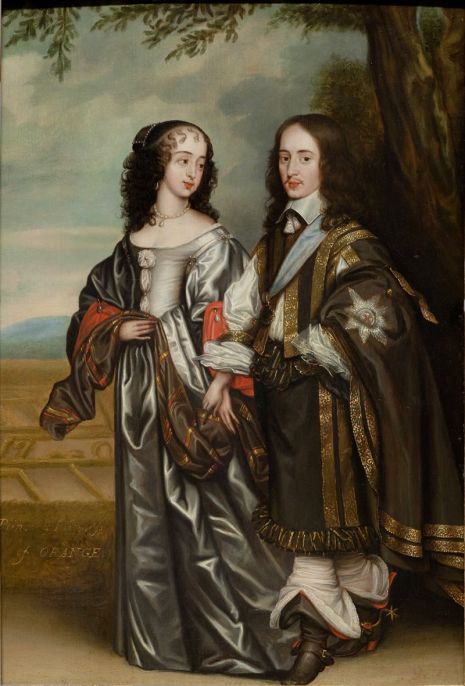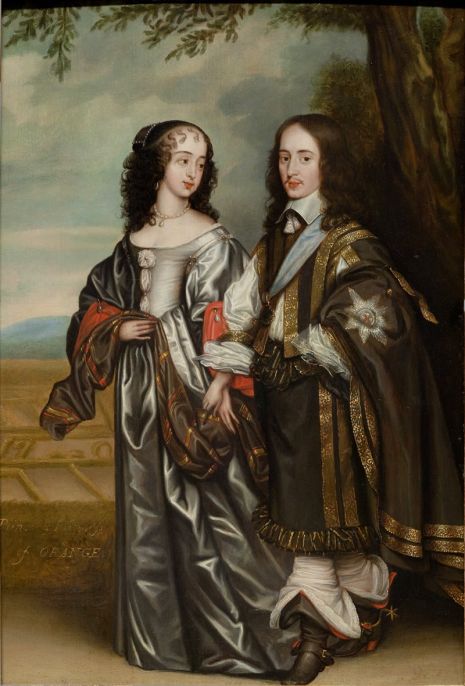In 1641, Prince Willem II, son of Frederik Hendrik and Amalia van Solms, married the then nine-year-old English princess Maria Henriëtte Stuart at the age of fourteen. On this small, undated panel, the couple was painted a few years after the wedding ceremony in the style of Gerard van Honthorst. The portrait was probably made by a pupil from his studio or by his younger brother Willem. The princess is dressed here in a chic, silver-colored dress with a shawl in her hands. The later stadtholder is depicted as a young soldier in a brown-grey suit, trimmed with wide gold-coloured bands (gold braid), with riding boots underneath. The emblem of the Order of the Garter is embroidered on his cloak. The prince also wears the blue ribbon of the order with a medal of Saint George attached to it over his left shoulder. The English King Charles I had presented these signs to his son-in-law in April 1646.

In accordance with the conventions of painting, the man is depicted here to the right of the woman, which according to heraldry was the most prominent position. On some of the couple's prints, Maria Henriëtte is depicted on this spot, because as an English king's daughter she was higher in rank than her husband. The marriage between the prince and princess was carefully arranged and clearly politically motivated. During the reign of stadthouder (governor) Frederik Hendrik, the Republic was still at war with Spain. An alliance between his eldest son and the English king's daughter was an ideal way to prevent an alliance between England and Spain and to secure English support in his struggle. This also increased the prestige of the Oranges within Europe. William II's marriage and reign were short-lived. Three years after taking office, the stadthouder died of smallpox. A week later, Maria Henriëtte gave birth to a son. This Prince William III would remain excluded from the office of stadthouder until 1672.
